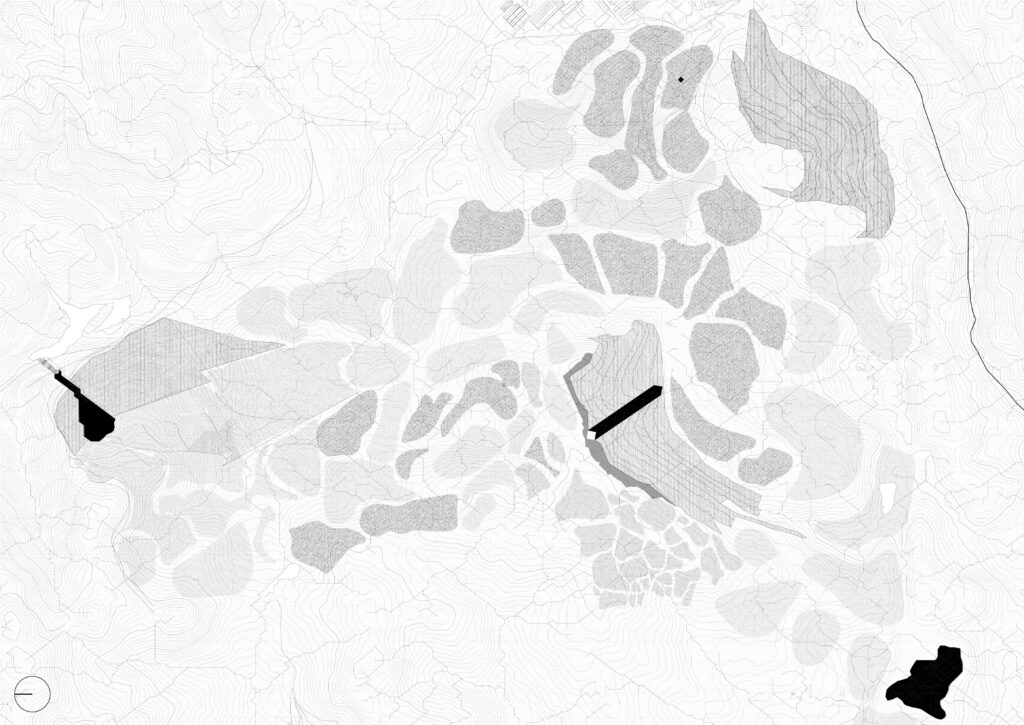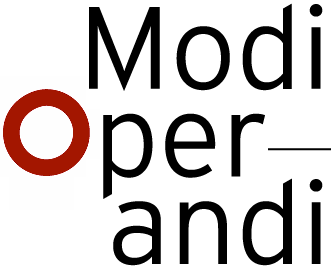THE RITUAL GRIEF
The culmination of the conducted research, and subsequently translated into an architectural design project, materialized in a series of five intervention proposals around the coal mine. Dead landscapes, i.e. the main sites under investigation, are coded as a ritual unfolding along the territory. These interventions each reflect a different stage of grief regarding the landscape: each successive stage of grief (denial, anger, bargaining, depression and acceptance) are translated into a specific architectural program and form of expression in different areas around the mine, freezing the state of impermanence of each site. It is imperative to note, here, that the characteristics of the site (i.e. the location, program, natural composition, amongst other factors) are the main actors dictating both the specific stage of grief and the adequate intervention fitting the landscape. The primary design intent was to tweak and isolate the indeterminate forces that shape the coal mine, and to transform them into material and determinate architectural expressions. As such, the state of vulnerability of the landscape is translated into a permanent gesture, suggesting an enduring expression that captures the states of impermanence dictated by specific instances of the site under study.

As it deals with the physically intangible realm of grief in its different stages, the materialization of the project’s architectural concept, was preceded by a clear definition of the understanding of that concept through architectural notions, adjectives and techniques. Through the anthropomorphism of the landscape, it was possible to imagine clear tangible physical relationships that uncover the underlying processes, systems and phenomena. Each different project site dictates, according to its fabrication, each specific corresponding stage of grief that unravels in it. This enabled the delineation of a clear and direct narrative that guided the exercise.
The main design considerations were, firstly, the establishment of a clear and convincing relationship with the landscape and each specific site. Working with topography, hydrology, atmosphere and other significant natural processes, each intervention suggests a different state of tension through its architectural gesture and related expression. The main concern was the coding of the ritual of grief though a ‘territorial whole’, articulating the landscape by a series of reflective instances. Secondly, it was important to consider local, ethical and sociological components incorporated in the reasoning of each intervention. Ethnographic practices, climate and materiality are all key concepts that were translated into design tools placed at the core of the design process. As such, each intervention is characterized by a degree of precision and specificity in relation to its context. It is important here to note that, while they vary in scale, the five interventions attempt to establish a contrast with the surrounding landscape, acting through different temporalities in order to blend in – or not! – with their surroundings. The obvious and unmediated architectural manifestation of this intent is the feature of monumentality which lies at the heart of each intervention, and which gives the series a distinct architectural expression. Lastly, it is important here to note that certain issues pertaining to the anthropogenic nature of architectural ‘programs’ have been substituted with programmable architectural interventions that serve a specific purpose. While some are infrastructural interventions, others put natural processes and events at the center of their programming and spatio-temporal logic. It is quite clear that, for the sake of this project, the ‘client’ becomes the landscape, rendering nature and the built environment the main stakeholders in this design approach.
